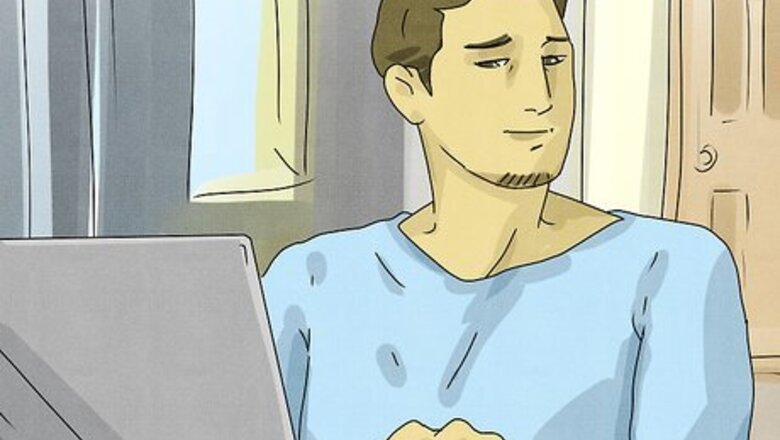
views
- Start changing your porn habits by admitting you have a problem. Then, get rid of your pornographic material and set up a porn filter on all your devices.
- Pursue healthy activities in place of porn and consider support groups or therapy. Try asking a trusted friend to be your accountability partner throughout your journey.
- You may have a problem if watching porn interferes with your daily responsibilities or your sexual relationships seem less fulfilling in comparison.
- The negative impacts of pornography include sexual dysfunction, difficulty getting aroused, loneliness, or distorted beliefs about sexuality and relationships.
Quitting Pornography
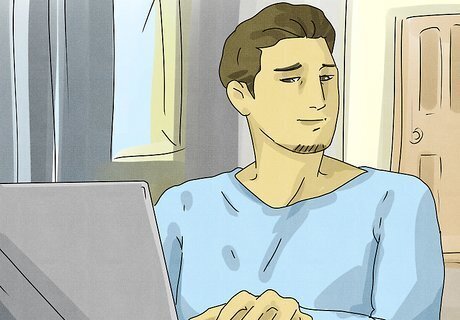
Recognize and admit that you’re consuming too much pornography. Reflect on the negative feelings and problems porn has brought into your life and remember that you don’t have to watch porn every single day or have an addiction for it to be an issue. Pornography problems are more about how and why you use it than how often. It can feel embarrassing to admit you’ve got an issue with pornography, but it’s the first step toward improving your habits and making positive change!
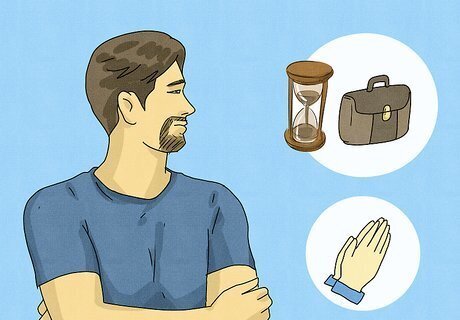
Re-identify and evaluate your values. Think about what’s motivating you to change or why you want to stop looking at porn. Maybe you’re trying to improve how you’re seen by others, or your porn consumption is taking too much time away from achieving your personal or professional goals. If you’re religious, you might see using porn as going against the teachings of your faith. When you feel stuck or like giving up, remember what inspired you to stop looking at porn in the first place.
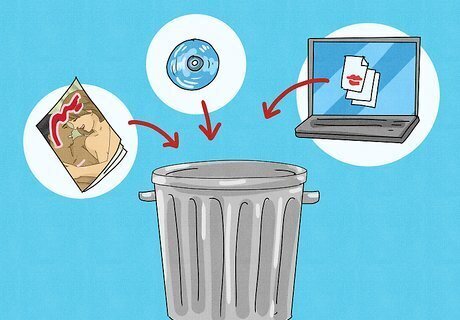
Get rid of everything in your current pornography collection. Delete any saved images or videos on your computer, phone, and other devices, and cancel your subscriptions to any pornographic websites you use. Throw out any physical magazines, photos, or even DVDs you might have as well. Shred magazines and scratch or break DVDs before you toss them so you’re not tempted to dig them out of the trash bin later. Consider moving desktop or shared computers to common areas in your home so you’re less tempted to look up explicit material.
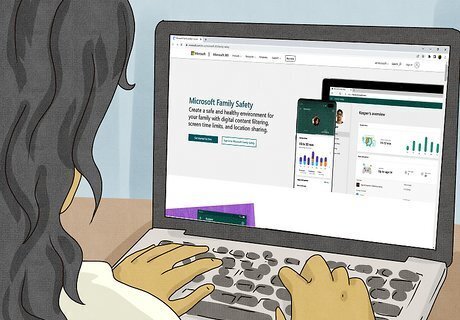
Install a porn filter on your devices to monitor your Internet use. Choose a filter that is hard to remove or bypass so it becomes extremely difficult to visit pornographic websites, or try using a browser extension to block off certain sites. Consider having a trusted friend install the filter with you so they can create a strong password that you won’t know. Consider turning off your internet when you know you won’t need it for work or other tasks to further remove the temptation. Filters or blockers are especially helpful at the beginning of your journey when resisting pornography feels the hardest. Some easy-to-use blockers include: Free or premium versions of Qustodio, which is compatible with any operating system except Linux. Microsoft Family Safety on Windows computers. Free or premium versions of Norton Family Online for Windows, iOS, and Android. The Christian site Covenant Eyes, which costs $10 per month and prevents the subscriber from bypassing the site blockages.
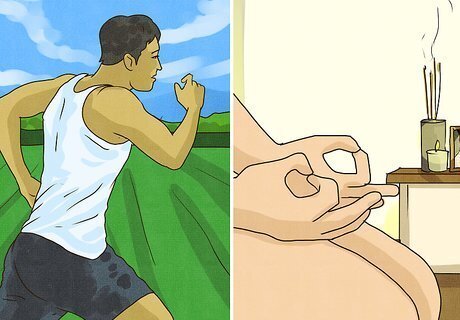
Substitute fulfilling and confidence-boosting activities in place of porn. Fill your time with activities like exercising several days a week or playing recreational sports, starting a new hobby, cultivating new friendships, or any other healthy activity you enjoy. Decide ahead of time which activity to engage in when you feel the urge to use porn so you have an action plan. Try going on a short trip or vacation to break your old habits. It’s easier to begin new habits with a change of scenery. Focus on boosting your physical and emotional health and your sense of self-worth. They’ll give you the confidence and strength to create a porn-free lifestyle. Keep in mind that your alternate activities may not feel as good to you as using porn, especially in the beginning. Stay strong and commit to your plan!
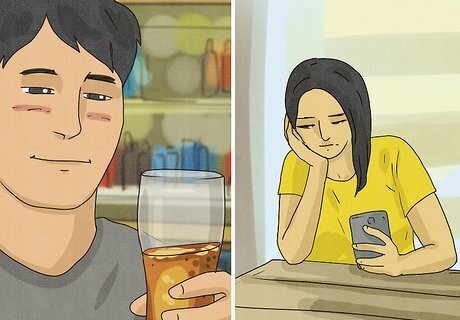
Identify the triggers that make you want to watch porn. Make a journal entry every time you feel the urge to use porn. Note what you were doing, thinking, and feeling at the time that may have stimulated the urge, and how it felt to try and resist. Triggers can be external (caused by something in your surroundings) or internal (caused by your thoughts and feelings). Common external triggers include: Unstructured alone time or traveling alone A breakup, argument with a partner, or an emotionally or physically unavailable partner Unexpected sexual stimuli like provocative billboards or encountering an attractive person Unexpected life changes or experiences (positive or negative) Drug or alcohol use Common internal triggers include: Loneliness or boredom Fear, anxiety, stress, or frustration Low self-esteem or feelings of shame An unmet need for validation or affection Sadness, grief, or unresolved anger and resentment
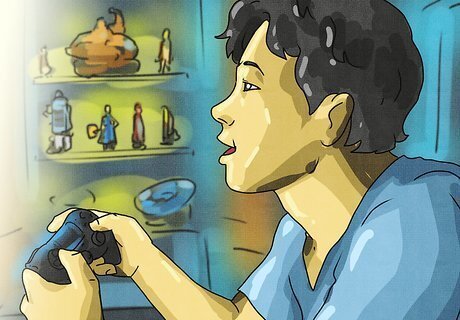
Combat your triggers with mindfulness, distractions, or avoidance. When you’re triggered, try meditating or using mindfulness techniques to focus on the present moment and not the urge to use porn. Try to reframe your thoughts—instead of feeling challenged, imagine yourself leaping over an obstacle with ease. Use positive distractions when mindfulness doesn’t work. Try alternate activities or carry an interesting book or game with you when you’re on the go. Avoid triggers you're unable to cope with. Take an alternate route to work to avoid a provocative billboard, or turn off movies with sexual scenes.
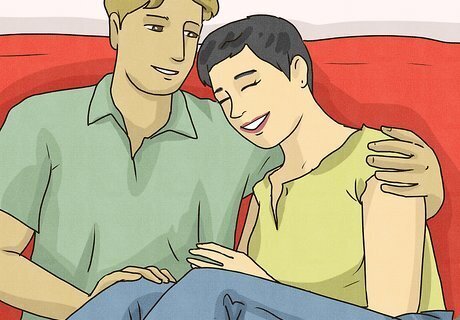
Fulfill your romantic and sexual needs with sensuality and intimacy. Take a break from sex for a few weeks or months to focus on your porn habits and engage with others emotionally. When you feel ready to interact sexually, focus on the 7 dimensions of healthy sexuality: Self-nurturing: Practice self-care and focus on activities and environments that facilitate healthy interactions with other people. Sensuousness: Stimulate all of your senses and indulge in behaviors and environments that make you notice colors, sounds, feelings, tastes, and smells. General relationship intimacy: Simply enjoy hanging out with others without being sexual. Partner intimacy: Spend time with your significant other (if you have one) without any sexual activity. Non-genital physical touch: Make you and your partner feel good without sexual stimulation, like snuggling, hand holding, kissing, or back rubs. Genital sexuality: Enrich and sustain sexual contact and emotional intimacy during sex (for example, holding eye contact while making love). Spiritual intimacy: Start thinking of sex as an expression of your feelings and your connection to your partner.
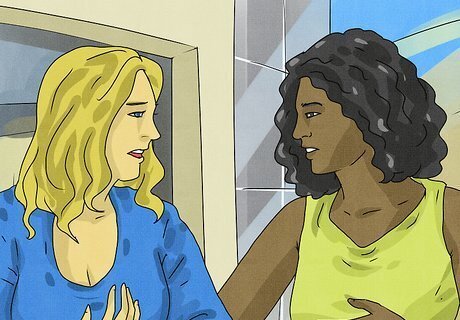
Find an accountability partner to help you commit to quitting porn. Announce your intention to stop using porn to someone of the same gender that you trust and who doesn’t struggle with the same behavior. If you suspect that they might undermine your attempts to reach your goal in any way, consider asking a different person for help. Avoid using your spouse or partner as an accountability buddy since they likely have a deeper emotional interest in your progress than a friend. Look for someone who listens to you when you struggle, gives you encouragement, holds you accountable, and problem-solves with you. Check in with your accountability partner regularly and honestly, open up when you backtrack, and celebrate your successes with them. Remember that you are ultimately responsible for breaking your porn habits, even if you have a wonderful support system to help you.

Consider joining a support group or 12-step program. Recognize that you’re not alone in your desire to quit porn and that there are others struggling with it, too. Consider 12-step programs like Sex Love Addicts Anonymous or Sexaholics Anonymous, which have chapters in many cities around the US. There are also a variety of online support communities, too. Look for a group that matches your values, whether it’s a faith-based organization or a more social group. Choose a group that meets frequently and start attending meetings as soon as possible to get the most out of the support group experience.
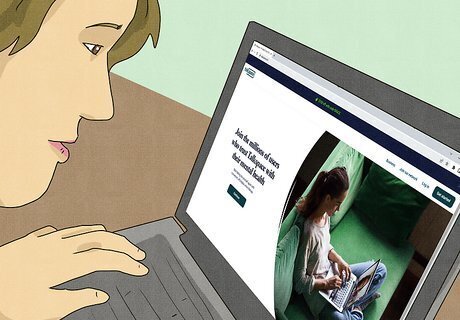
Seek professional help from a counselor or therapist. If you’re struggling to beat porn on your own, consult a therapist to help you sort through your triggers and other possible causes of porn consumption, like anxiety or depression. If you’re embarrassed by your problem, many online therapy services like BetterHelp or Talkspace offer an anonymous option where you can discuss your habits from home with a nickname. If your relationship or partner has been impacted by your pornography usage, consider signing up for couples therapy or relationship counseling.
Signs of a Pornography Problem
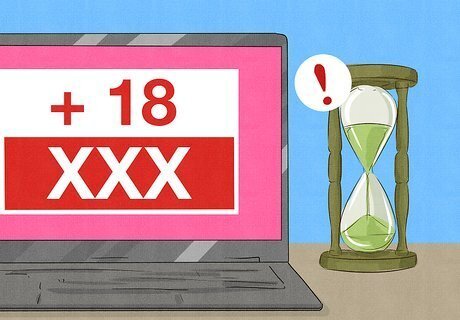
You struggle to cut back on how much porn you watch You may not be able to reduce your porn consumption or quit cold turkey, no matter how hard or often you try. Similarly, your porn use might increase over time if you don’t impose limits on yourself. You may also catch yourself lying to your partner or others about how much porn you regularly watch. There’s no consensus among psychologists about whether a porn habit should be described as an addiction or not.
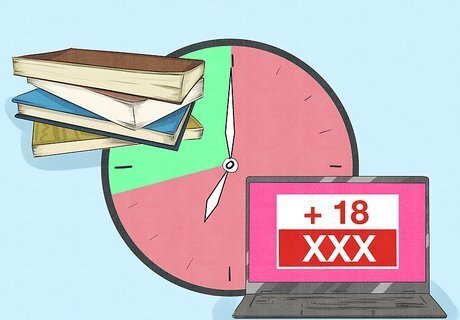
Porn takes priority over other tasks and responsibilities You may consider watching porn to be a must-do activity that bumps things like getting ready for work on time, following through on social plans, or other to-do items to second place. Everyday tasks or deadlines fall by the wayside because they don’t seem as important. Porn users might feel depression or exhaustion as they struggle to keep up with their regular routine because of their porn habits. When porn takes priority, it’s a major sign that it’s starting to impact your life negatively. You don’t have to have an official addiction to be affected.
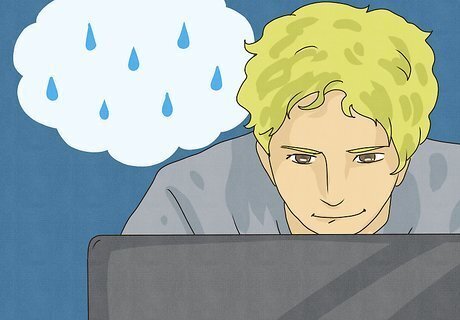
Porn is a distraction to avoid other feelings You might watch porn to get a “high” to raise your mood (watching porn releases dopamine in your brain, similar to using drugs or alcohol). Similarly, you might use porn to escape feelings of anxiety, depression, anger or other unpleasant emotions. People may develop a pornography habit to reduce stress, cure boredom, feel good, cope with negative feelings, or avoid withdrawal symptoms.
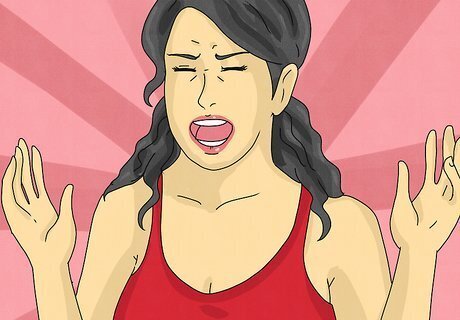
You feel distressed when you can’t watch porn You might get feelings of withdrawal or become moody, irritable, or isolated when you try to quit watching porn or can’t access it for a long period of time. You can’t get it off your mind, and other activities seem inconvenient or frivolous in comparison.

Sex becomes less satisfying Real-world sex might feel less fulfilling than scenarios in pornography. Your expectations of what sexual encounters are like become unrealistic, leading to riskier sexual practices (like suffocation, strangulation, or sex with multiple partners at once) in an attempt to chase the on-screen fantasies you’ve watched. Some people engage in these behaviors safely and consensually without a porn problem, and these behaviors aren’t problematic by themselves. Communicate what you’d like to try in the bedroom with your partner beforehand and to respect their boundaries around what they’re willing to do.
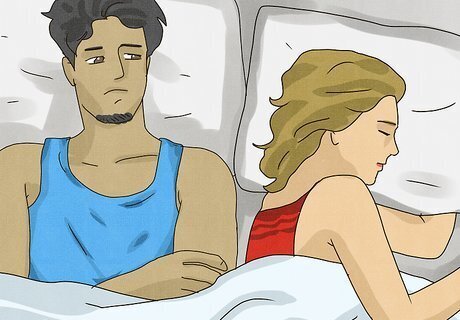
The romantic and sexual dynamic in your relationship changes You might find it harder to become aroused by your partner, or you might notice your sexual behavior toward them changing. If you feel like you’re acting more dominant, aggressive, or emotionally disconnected, you may be overconsuming pornography. You may struggle to see these changes yourself or not believe your partner when they bring them to your attention.
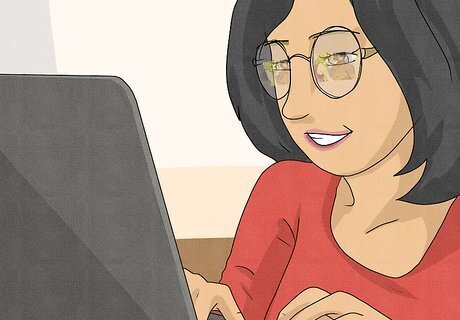
You continue watching porn despite its negative impacts If you recognize that porn makes you feel ashamed or that it’s interfering with your work and relationships but you keep watching anyway, it could be a sign of dependence or addiction. This is especially likely if you’ve suffered a direct consequence from watching porn but haven’t changed your habits. For example, you may lose a job because you watched porn at work, but then continue to watch it at your new job.
Negative Impacts of Pornography
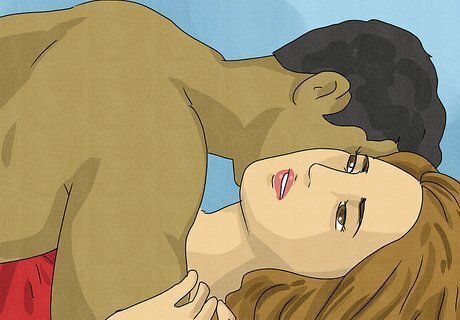
Difficulty getting aroused without watching porn If you watch porn too frequently, there’s a chance you can become dependent on it to get sexually aroused. This means you might struggle to get aroused in organic or interpersonal sexual situations, which can lead to fewer sexual engagements with your partner or other people. If you’re in a relationship, both you and your partner may experience a decrease in sexual satisfaction and emotional closeness as a result.
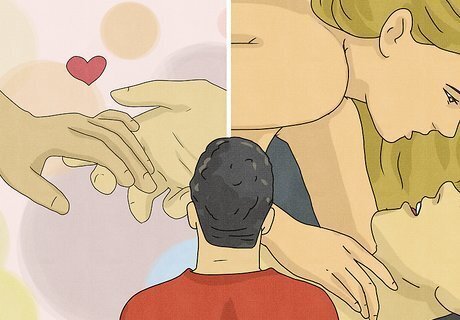
Distorted beliefs about sexuality and relationships Since porn is highly scripted, edited, and produced, it can lead to misguided views on how healthy and intimate sexual relationships work in the real world. Excessive porn watchers may begin to objectify others, behave promiscuously, and behave or think erotically in inappropriate scenarios. Men who watch too much porn are more likely to subconsciously develop misogynistic attitudes than men who abstain or watch in moderation. All of these skewed beliefs and behaviors lead to insecure attachments to other people, romantically and sexually. Remember that there’s nearly always a director or videographer on the other side of the camera (typically a man) controlling what happens on-screen.
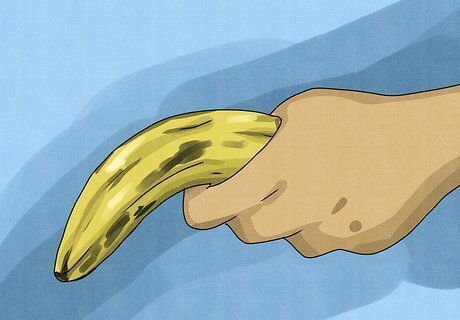
Sexual dysfunction Watching an excess of pornography can make it difficult to perform your best in real-life sexual situations. Issues like premature ejaculation and erectile dysfunction (the inability to get or maintain an erection) can appear in men, and women may struggle to achieve an orgasm during sex.
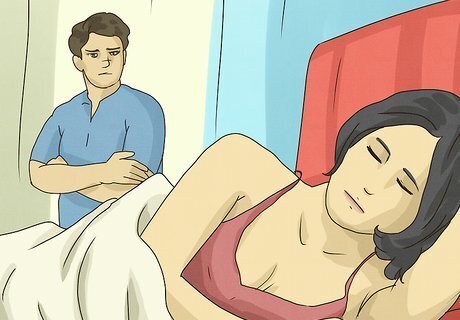
A lowered drive for person-to-person sex Men and women who watch too much porn or who have a porn addiction may prefer masturbation and watching porn alone instead of having sex with others (including with their partners). When they do have the urge, they may have little patience and want to have sex immediately. The lack of patience can also lead to fantasizing or obsessing about sex with random strangers they encounter throughout their day.
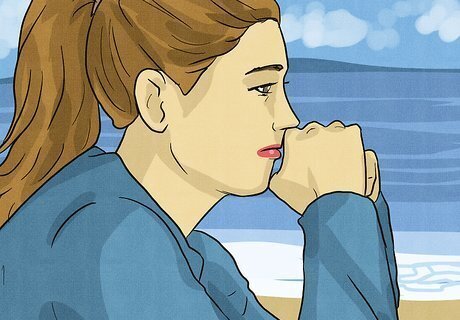
Loneliness Studies have shown that porn use is significantly associated with feelings of loneliness. The relationship is cyclical—watching porn can make you feel lonely, which then makes you want to watch even more to get a false sense of intimacy. When porn is used to alleviate loneliness, your chances of becoming addicted increase. Too much porn use might lead to feelings of isolation, a disruption of normal attachment behavior, and trouble forming stable, satisfying relationships.













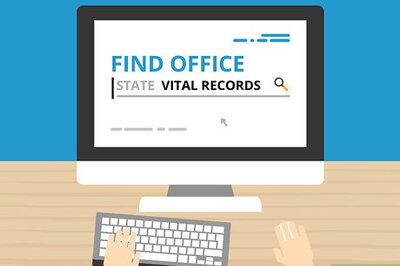




Comments
0 comment